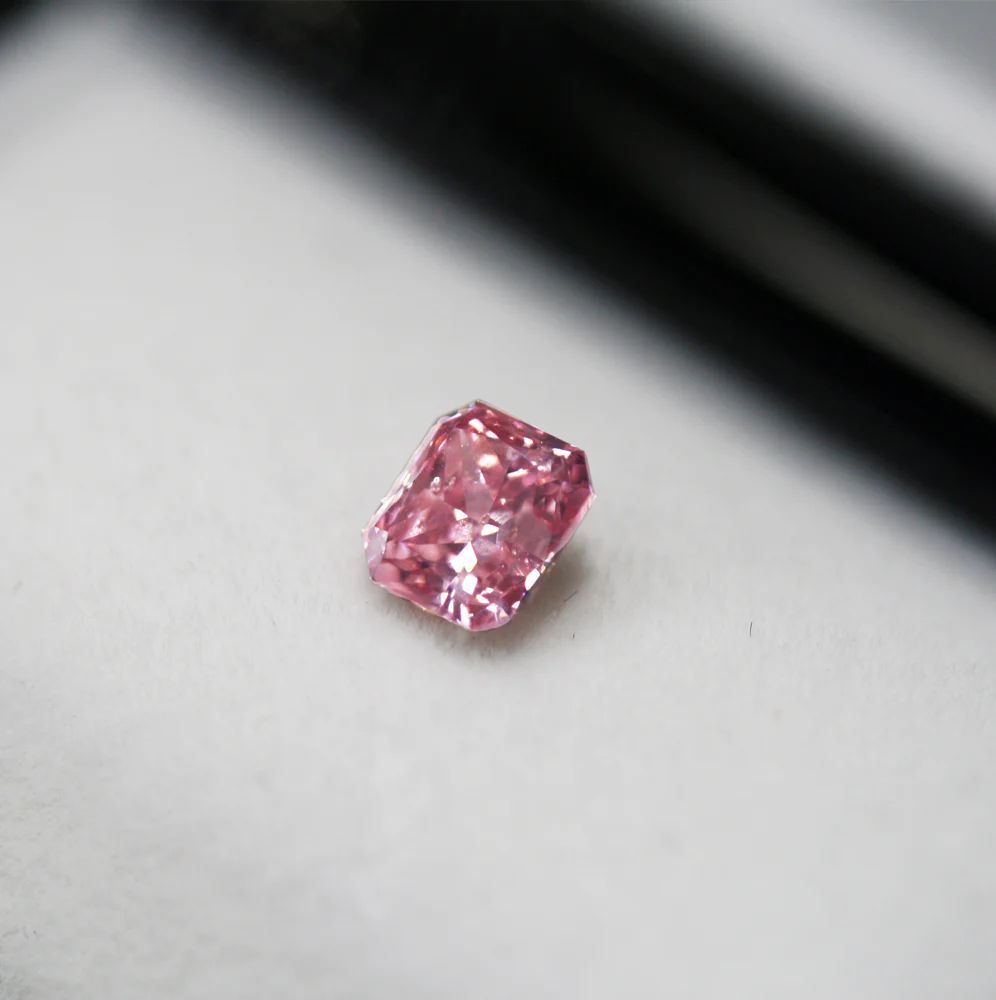Lab grown diamonds have emerged as a disruptive force in the gemstone industry, offering investors a unique opportunity to participate in a rapidly evolving market. As consumer preferences shift towards sustainable and ethically sourced products, these diamonds have gained traction not only for their environmental benefits but also for their investment potential.
Table of Contents
Introduction to Lab Grown Diamonds
In recent years, investment lab grown diamonds have gained popularity as an alternative to natural diamonds. Unlike mined diamonds that form over millions of years deep within the Earth’s crust, lab grown diamonds are created in controlled laboratory environments using cutting-edge technology. They possess the same chemical composition and physical characteristics as natural diamonds, making them visually and chemically identical.
What are lab grown diamonds?
Lab grown diamonds, also known as synthetic diamonds or cultured diamonds, are created using two main methods: High Pressure-High Temperature (HPHT) and Chemical Vapor Deposition (CVD). These processes mimic the natural conditions under which diamonds form but accelerate the crystal growth process significantly.
Rise in popularity and demand
The demand for lab grown diamonds has surged due to several factors, including their ethical sourcing and sustainable production methods. Consumers, particularly millennials and Gen Z, are increasingly conscious of the environmental impact of their purchases and prefer products that align with their values.
Comparison with Natural Diamonds
When considering investment opportunities, understanding the differences between lab-grown and natural diamonds is crucial.
Differences in formation and structure
Natural diamonds are formed deep within the Earth’s mantle under intense pressure and high temperatures, whereas lab grown diamonds are created in a controlled environment that replicates these conditions. This difference in formation affects their geological age and origin.
Quality and grading standards
Both types of diamonds are graded using the same criteria known as the 4Cs: cut, color, clarity, and carat weight. Lab- grown diamonds often exhibit fewer inclusions and can be of higher clarity compared to natural diamonds of similar price points.
Investment Potential of Lab Grown Diamonds
Investors are increasingly drawn to the potential financial gains offered by lab grown diamonds, driven by their affordability and growing market acceptance.
Market growth and forecasts
The global market for lab grown diamonds is expanding rapidly, with projections indicating significant growth in the coming years. Factors such as increasing consumer awareness and technological advancements in diamond production contribute to this optimistic outlook.
Factors driving investment interest
Several factors make lab grown diamonds an attractive investment option. These include their lower entry cost compared to natural diamonds, potential for price appreciation, and alignment with sustainable investment strategies.
Advantages of Investing in Lab Grown Diamonds
Investing in lab grown diamonds offers distinct advantages over traditional diamond investments, appealing to both individual investors and institutional buyers.
Cost-effectiveness compared to natural diamonds
Lab grown diamonds are typically priced at a discount of up to 40% compared to natural diamonds of similar quality. This affordability allows investors to acquire larger stones or diversify their diamond portfolios without significantly increasing their investment capital.
Sustainability and ethical considerations
One of the primary drivers of demand for lab grown diamonds is their ethical and sustainable production process. Unlike mined diamonds, which often raise concerns about labor practices and environmental impact, lab grown diamonds are produced with minimal ecological footprint and under controlled working conditions.
Challenges and Risks
Despite their growing popularity, investing in lab grown diamonds is not without challenges and risks that potential investors should consider.
Perception in the luxury market
Lab grown diamonds face challenges in gaining widespread acceptance in the luxury market traditionally dominated by natural diamonds. Some consumers still perceive natural diamonds as more prestigious or valuable, impacting the demand for lab grown diamonds in certain segments of the market.
Long-term value retention
The long-term value retention of lab grown diamonds is another consideration for investors. While the market for these diamonds is expanding, their resale value and market liquidity may vary depending on consumer preferences and market conditions.
How to Start Investing
For investors looking to enter the lab created diamonds market, understanding the basics of diamond valuation and market dynamics is essential.
Finding reputable suppliers and retailers
Choosing reputable suppliers and retailers is crucial for ensuring the authenticity and quality of lab-grown diamonds. Investors should look for certifications from recognized grading laboratories and conduct due diligence before making any investment decisions.
Understanding pricing and valuation
Unlike natural diamonds, which derive value from scarcity and market demand, the pricing of lab-grown diamonds is influenced by production costs, technological advancements, and consumer perception. Familiarizing oneself with these factors can help investors make informed investment choices.
Market Trends and Predictions
The lab-grown diamond industry is characterized by rapid technological advancements and evolving consumer preferences, shaping its future growth trajectory.
Industry innovations and technological advancements
Advances in diamond synthesis technologies continue to drive innovation in the lab-grown diamond industry. These innovations result in larger and higher-quality diamonds that appeal to both consumers and investors.
Global market outlook
The global market for lab-grown diamonds is expected to expand significantly, supported by increasing consumer awareness of ethical and sustainable practices in diamond production. Regions such as North America and Europe are witnessing particularly robust demand for lab-grown diamonds.
Future Outlook for Lab-Grown Diamonds
Looking ahead, lab-grown diamonds are poised to disrupt the traditional diamond industry and carve out a significant market share.
Potential for disruption in the diamond industry
As technological capabilities improve and consumer preferences evolve, lab-grown diamonds have the potential to challenge the dominance of natural diamonds in certain market segments. Their ethical and sustainable credentials resonate strongly with younger generations of consumers.
Consumer preferences and changing perceptions
The shift towards sustainability and ethical consumption is expected to drive continued demand for lab-grown diamonds, influencing purchasing decisions across various demographic groups.
Case Studies and Success Stories
Examining real-world examples of successful investments in lab-grown diamonds can provide valuable insights for prospective investors.
Examples of successful investments
Several investors have achieved significant returns by strategically investing in lab-grown diamonds during their early stages of market development. These success stories highlight the potential for capital appreciation and portfolio diversification offered by this emerging asset class.
Lessons learned from past trends
Analyzing past trends and market dynamics can help investors identify opportunities and mitigate risks when investing in lab-grown diamonds. Lessons learned from successful and unsuccessful investments can inform future investment strategies.
Certification and Authentication
Ensuring the authenticity and quality of lab-grown diamonds is essential for maintaining investor confidence and market integrity.
Importance of certification for investors
Certification from reputable grading laboratories such as the Gemological Institute of America (GIA) or the International Gemological Institute (IGI) provides assurance of a diamond’s authenticity and quality. Investors should prioritize diamonds with recognized certifications to mitigate the risk of counterfeit or misrepresented stones.
Recognized grading laboratories
Leading grading laboratories play a crucial role in establishing industry standards and providing objective assessments of lab-grown diamonds. Their certifications serve as valuable tools for investors seeking transparency and reliability in the diamond market.
Environmental Impact and Sustainability
The environmental benefits of lab-grown diamonds contribute to their appeal among environmentally conscious consumers and investors.
Eco-friendly benefits of lab-grown diamonds
Unlike mined diamonds, which require extensive land excavation and can have a significant environmental footprint, lab-grown diamonds are produced with minimal impact on the environment. They reduce the demand for diamond mining and contribute to sustainable resource management practices.
Carbon footprint comparison
Studies have shown that the carbon footprint of lab-grown diamonds is significantly lower compared to natural diamonds. This environmental advantage aligns with global efforts to mitigate climate change and promote sustainable development.















